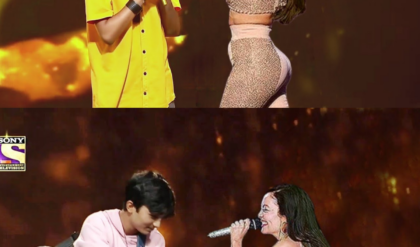Why Media needs to be SENSITIVE! | Faridoon Shahryar | Connect Cine
Why Media Needs to Be Sensitive! | Faridoon Shahryar | Connect Cine
In today’s rapidly evolving media landscape, sensitivity is more important than ever. Every piece of content has the potential to reach millions worldwide, touching on lives, perceptions, and public opinion in ways that were unimaginable a few decades ago. Faridoon Shahryar, a renowned media expert, explores this very idea in his thought-provoking video “Why Media Needs to Be Sensitive!” on Connect Cine. Shahryar emphasizes why journalists, creators, and media houses must adopt a compassionate approach, considering both the responsibility they carry and the consequences of overlooking sensitivity. Below, we’ll dive into the key points of his discussion, shedding light on the essential role of empathy in media.
Understanding Sensitivity in Media
Sensitivity in media isn’t just about avoiding offensive content; it involves a holistic approach that includes understanding diverse perspectives, respecting cultural nuances, and ensuring that audiences are treated fairly and respectfully. Shahryar describes how a more empathetic media environment can foster trust and contribute positively to social discourse. With misinformation, sensationalism, and divisive content on the rise, he argues that a sensitive approach isn’t just desirable – it’s necessary.
The Power and Reach of Media in the Digital Age
Media today is everywhere: social platforms, streaming services, online articles, podcasts, and more. A single post, video, or tweet can instantly go viral, sparking debates and influencing public opinion. With such an influential role, media needs to be cautious of what it puts out. Shahryar emphasizes that what may seem like a harmless statement can snowball, affecting individuals, communities, and even entire nations. Media creators must consider how their work impacts people, especially in times of social or political tension.
The Role of Empathy in Journalism and Storytelling
One of Shahryar’s core points is the significance of empathy in journalism and storytelling. Journalists and content creators often cover stories that touch on sensitive subjects like mental health, socio-political issues, or personal tragedy. Approaching these topics with empathy means moving beyond mere facts to truly understand and convey the human element. This approach respects the dignity of those involved and enables audiences to connect on a deeper, more emotional level. Shahryar emphasizes that empathetic storytelling can not only enhance the quality of the content but also create a loyal, trusting audience.
The Cost of Insensitive Media
Shahryar doesn’t shy away from addressing the detrimental effects of insensitive media. In recent years, we’ve seen how insensitivity can lead to public outrage, boycotts, and even severe mental health repercussions for those affected. He highlights incidents where media coverage has exacerbated trauma for individuals involved, especially in cases of tragedy or personal loss. Such cases serve as reminders that when the media neglects sensitivity, the cost is paid by real people. Shahryar calls for a renewed awareness, urging content creators to weigh the implications of their work before releasing it.
Addressing Cultural and Social Diversity
One of the major challenges facing global media today is the need to address cultural and social diversity respectfully. With audiences spanning different countries, cultures, and backgrounds, content that seems appropriate in one context can be offensive in another. Shahryar discusses how content creators need to be aware of cultural nuances and biases to ensure that their work doesn’t alienate or offend particular groups. He points to recent examples of backlash against global brands and media outlets that have failed to consider diverse perspectives. The lesson here is clear: sensitivity is not just about empathy but also about understanding the complexities of a globalized world.
Why Sensitivity Equals Responsibility
For Shahryar, sensitivity goes hand in hand with responsibility. Media professionals have a duty to their audiences to be fair, accurate, and balanced. In a world rife with “fake news” and clickbait, audiences are increasingly skeptical and discerning. Sensitivity isn’t just a moral duty but a professional one – respecting audiences and treating stories with care fosters credibility. Shahryar underscores that, as creators, our responsibility extends to presenting stories truthfully, highlighting issues thoughtfully, and advocating for fairness and justice.
How Can Media Become More Sensitive?
Shahryar provides practical suggestions for how media can embrace sensitivity more actively. He suggests training for journalists and content creators on topics like ethical storytelling, cultural awareness, and mental health considerations. Building diverse teams within media organizations can also help bring a range of perspectives, reducing the risk of insensitive content. He advocates for creating editorial guidelines that put sensitivity at the forefront, ensuring that content is reviewed and edited with an empathetic lens.
Finally, Shahryar believes that media professionals need to be accountable for their work. When errors are made, it’s crucial to acknowledge and rectify them publicly. This accountability not only demonstrates respect for the audience but also reinforces the idea that sensitivity is central to media integrity.
A Call to Action for Audiences and Creators Alike
As Shahryar concludes, he issues a call to action: while media organizations play a critical role in creating sensitive content, audiences also have a part to play. By supporting and sharing responsible, respectful content, audiences can encourage media houses to prioritize empathy over sensationalism. Sensitivity in media is a shared responsibility – and every view, like, and share has an impact.
News
Actress Mamta Kulkarni Returns to Mumbai After 25 Years After Bombay HC Drops FIR In Drug Case
Actress Mamta Kulkarni Returns to Mumbai After 25 Years After Bombay HC Drops FIR In Drug Case In a dramatic turn of events, Mamta Kulkarni, the enigmatic Bollywood star of the 90s, has made headlines again, this time for stepping…
Rashmika Mandanna and Salman Khan Gear Up for Electrifying Dance Number in Sikandar – Behind-the-Scenes Look!”
Rashmika Mandanna and Salman Khan Gear Up for Electrifying Dance Number in Sikandar – Behind-the-Scenes Look!” Rashmika Mandanna and Salman Khan Gear Up for Electrifying Dance Number in Sikandar – Behind-the-Scenes Look!” Rashmika Mandanna and Salman Khan Rehearse for an…
Nargis Fakhri Involved in Shocking Double Murder Case: Sister Arrested! The Truth Behind the Bollywood Scandal!
Nargis Fakhri Involved in Shocking Double Murder Case: Sister Arrested! The Truth Behind the Bollywood Scandal! Nargis Fakhri Involved in Shocking Double Murder Case: Sister Arrested! The Truth Behind the Bollywood Scandal! Bollywood, with all its glitz, glamour, and fame,…
Deepika Padukone and Rashmika Mandanna’s Behavior with Media at the Airport Who Won Heart
Deepika Padukone and Rashmika Mandanna’s Behavior with Media at the Airport Who Won Heart Deepika Padukone vs. Rashmika Mandanna: Who Won the Media’s Heart at the Airport? Airports are often the stage for many stars to show their true colors,…
Revealed: Vivek Oberoi’s Deceptive Marketing Strategy Exposed by Actor-Critic!
Revealed: Vivek Oberoi’s Deceptive Marketing Strategy Exposed by Actor-Critic! Revealed: Vivek Oberoi’s Deceptive Marketing Strategy Exposed by Actor-Critic! In a world dominated by social media and influencer culture, marketing strategies can often blur the lines between truth and fiction. It’s…
Vivek Oberoi’s Bold Statement That Could Make Salman Khan Red-Faced”
Vivek Oberoi’s Bold Statement That Could Make Salman Khan Red-Faced” Vivek Oberoi’s Bold Statement That Could Make Salman Khan Red-Faced” Bollywood has always been home to colorful personalities, heated rivalries, and moments of drama. Among the most talked-about feuds in…
End of content
No more pages to load











